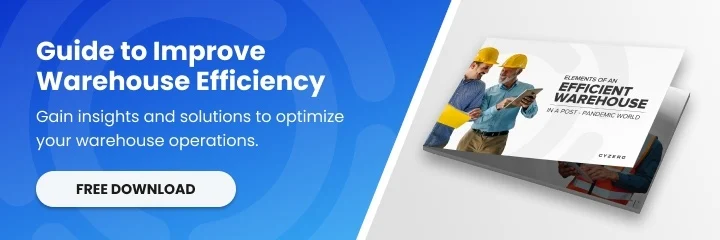Optimizing and automating the pallet dimensioning process is an important factor in increasing efficiency for many logistics organizations. An effective way to automate this process is to adopt a pallet dimensioner.
As this technology becomes mainstream, it’s unsurprising to see new vendors entering the market.
On one hand, this is great because it helps lower the price of pallet dimensioning systems, making them more affordable for small and mid-size companies—an excellent opportunity.
On the other hand, it also means a greater variety of systems with different capabilities and features, which creates more confusion and risks.
With that in mind, this article will help you navigate through the features, capabilities, and other considerations you must keep in mind when buying, leasing, or renting a dimensioning system.
Dimensioning Range
Not every dimensioner can measure every pallet/freight size. These systems have limitations regarding the size of pallets they can effectively measure. The dimensioning capabilities of a system are given in inches and expressed in Length, Width, and Height. Dimensioning capabilities of a system can range from minimum dimensions of 8 x 8 x 8 to maximum dimensions of up to 132 x 96 x 108.
Before reviewing pallet dimensioning systems, be sure to collect historical data on the pallet measurements processed by your business over a period of at least 6 months. Once you’ve collected a consistent range, add some room if you start processing larger pallet sizes in the future – protect the investment.
Before acquiring a system, validate that the equipment has been NTEP-certified for the desired dimensions. We will talk about this in detail later in this article. This information will be located on the NTEP Certificate of Conformance, which can be found by searching the NTEP Certificates of Conformance Database. Example of NTEP Certificate of Conformance below:

NTEP Certificate of Conformance
Dimensioning Accuracy
The ability of a system to accurately dimension a pallet depends on multiple factors. Among the most important include the technology being used (laser, infrared, ultrasonic, 3D scanner – or a combination), the limitations inherited by each technology, and whether the technology being used is intended for commercial or consumer purposes.
Laser technology is the most accurate but also the most expensive. Commercial infrared sensors have become very accurate and also more cost-effective. 3D scanners are less accurate, although the technology is progressing considerably.
The accuracy of a pallet dimensioning system is measured in inches with a +/- margin of error. An acceptable margin of error ranges between ±0.25″ and ±0.50″.
Scanning Speed
The scanning speed of a pallet dimensioner is another technical spec to consider, especially in operations that process large numbers of pallets.
The scanning speed of a dimensioning system is measured in seconds and is counted from the moment the scan is triggered to the moment it is completed, and dimensions are captured.
The average scanning speed for these systems varies between 3 to 6 seconds. Although it’s normal to conclude that a faster system is better, remember to consider the technology used and its accuracy.
Very often, there is a trade-off between dimensioning range, accuracy, scanning speed, & cost.
System Integration
Most pallet dimensioners can be implemented as a standalone solution and do not require integration with a WMS, TMS, or ERP. Without integration, most systems provide a built-in interface and methods to trigger the scan and display the dimension information.
However, to truly maximize operational efficiency and reduce data entry errors, the systems must be integrated with the WMS, TMS, or ERP. Typically, these systems can be integrated via an Application Programming Interface (API) or XML files that can be published in an FPT site and later picked and processed by the WMS, TMS, or ERP system.
Always check with your vendor for the integration options and whether any costs are associated.
NTEP Certification
The NTEP certification from the National Conference of Weights and Measures (NCWM) provides assurance that weighing and measuring instruments are manufactured to meet commercial standards.
NTEP-certified equipment and instruments have been tested and evaluated to meet government standards and serve as a guideline to help end users invest in the right system. Equipment/instruments that are NTEP certified are labeled with the following logo.

NTEP Certification Logo
Why is this important? Any business that charges or sells based on weight or size in the United States must use a Legal-for-Trade dimensioner or scale instrument. So, if you have a dispute, you want to ensure that your pallet measurements are NTEP-certified to prove accuracy.
You can check if a vendor is NTEP certified by searching in the NTEP database – link below:
NTEP Certificates of Conformance Database
Manufacturer, Warranty & Support
Acquiring a pallet dimensioning system generally requires a significant investment or contractual commitment, so it is important to select the right manufacturer to protect your investment.
From a vendor perspective, you want to verify that the manufacturer has a history of research & development in this area. As this technology becomes mainstream, products will continue to evolve overnight. For a vendor not specialized in this market segment, it will be almost impossible to keep up.
From a warranty viewpoint, validate what is covered by the warranty (the entire system or specific components), the length of time the equipment and/or components will be covered, and who will be responsible for maintenance in the case of failure. Finally, confirm who is responsible for providing support and whether there are any related charges.
Other features that your business could benefit from include the ability to take pictures of the cargo or integrate the pallet dimensioner with the weighing scale. Check this and all the above considerations before committing to a product and manufacturer.
Take your time, and do not rush the decision. Remember, you are free to choose, but you are not free from the consequences of your choices.
Was this post helpful? Feel free to post comments, questions, or topics you want us to discuss in the comments section below. Or send them to us on X or Facebook.












